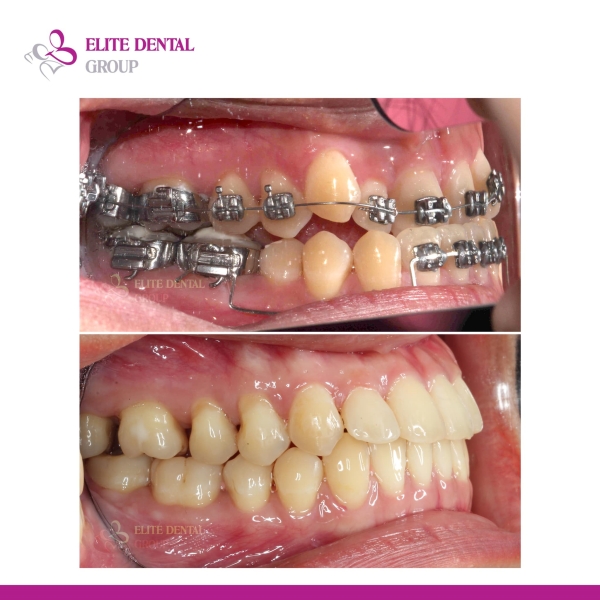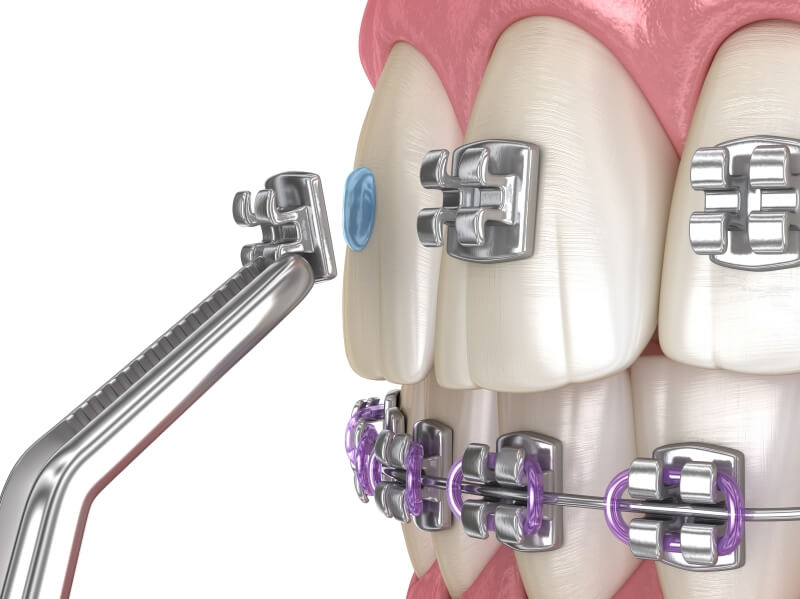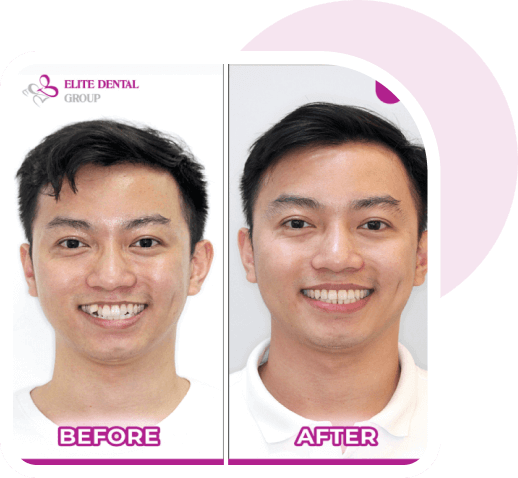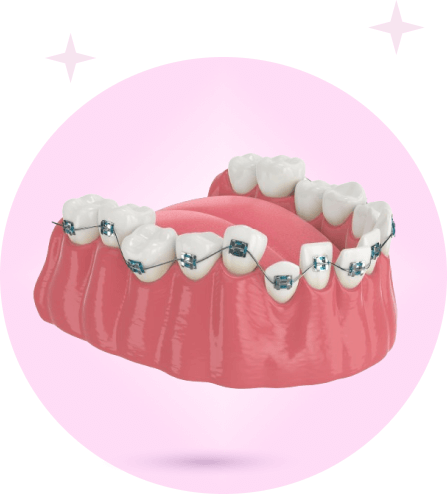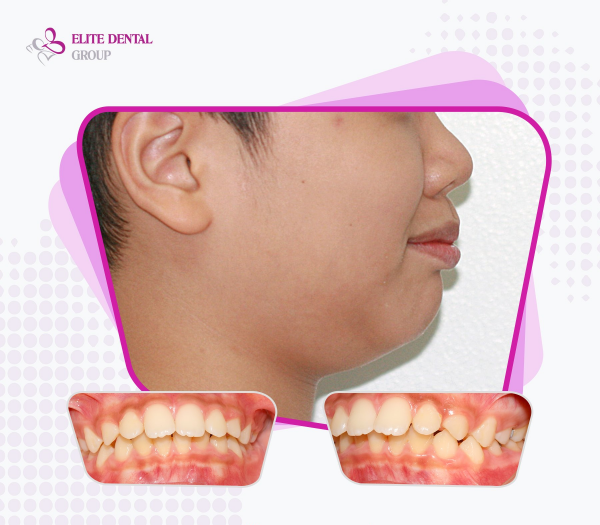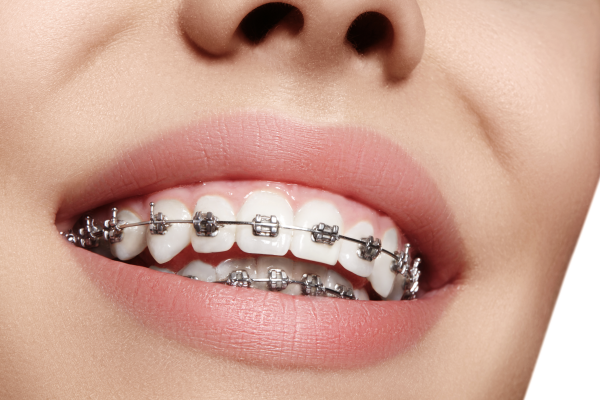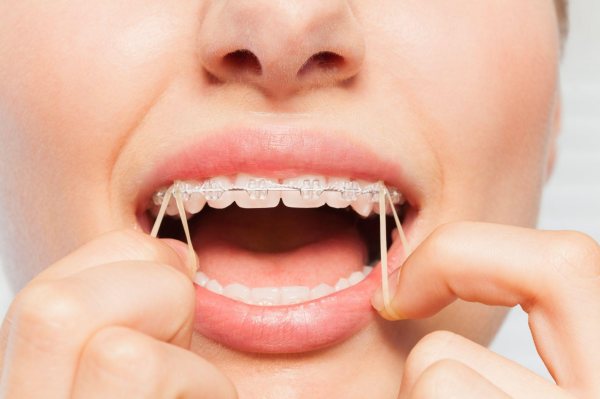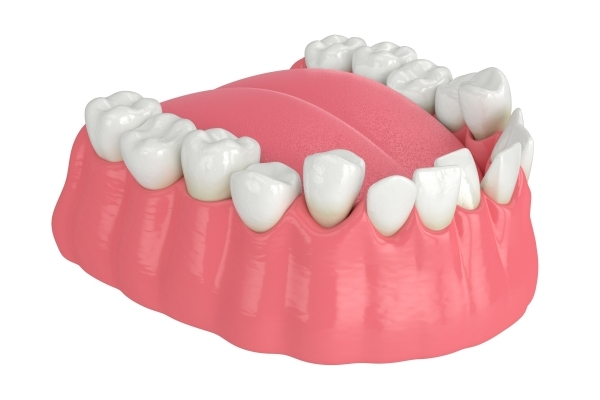What Are Orthodontic Braces?
Bracket braces, also known as orthodontic braces, are a method that uses brackets combined with specialized orthodontic archwires. This system generates a pulling force that helps move the teeth to the desired positions on the dental arch, while also adjusting bite misalignments to a physiologically correct state. This effectively addresses various dental imperfections such as overbites, underbites, gaps, and crowded teeth.
What Are Types Of Braces?
Currently, there are five main types of brackets, each with its own distinct characteristics. Depending on the dental condition, orthodontists will recommend the most suitable type to achieve a healthy, beautiful smile and comfortable chewing.
 Metal Bracket Braces
Metal Bracket Braces
This method utilizes brackets made from metal alloys or titanium, which are bonded onto the surface of the teeth.
- Advantages: Metal bracket braces are easy to replace if damaged or lost, they are cost-effective, and they provide high effectiveness in tooth alignment.
- Disadvantages: They are considered less aesthetic compared to other types of braces.

 Ceramic Orthodontic Braces
Ceramic Orthodontic Braces
With ceramic orthodontic braces, dentists use brackets made from ceramic material, designed to be small and elegant.
- Advantages: This orthodontic method ensures aesthetic appeal and reduces visibility, minimizing gum and lip irritation.
- Disadvantages: Ceramic brackets are thicker and more brittle than metal brackets, making them more prone to breakage if not handled carefully. They also have higher wear on opposing teeth due to their abrasive nature.
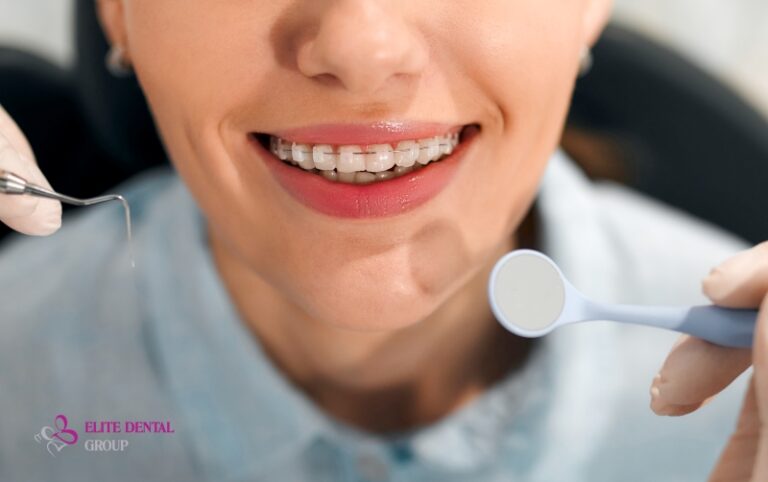
 Self-Ligating Metal Orthodontic Braces
Self-Ligating Metal Orthodontic Braces
This type of braces uses a self-locking mechanism instead of elastic ties to secure the archwire in the bracket slot, facilitating tooth movement.
- Advantages: Since there are no elastic ties, patients do not experience issues like elastic breakage, slippage, or needing to replace ties. This can save time on follow-up appointments.
- Disadvantages: Self-ligating metal bracket braces tend to be more expensive than traditional metal braces. Additionally, the presence of the self-locking mechanism may increase bulkiness and visibility, potentially causing a slightly more noticeable and bulky feeling.
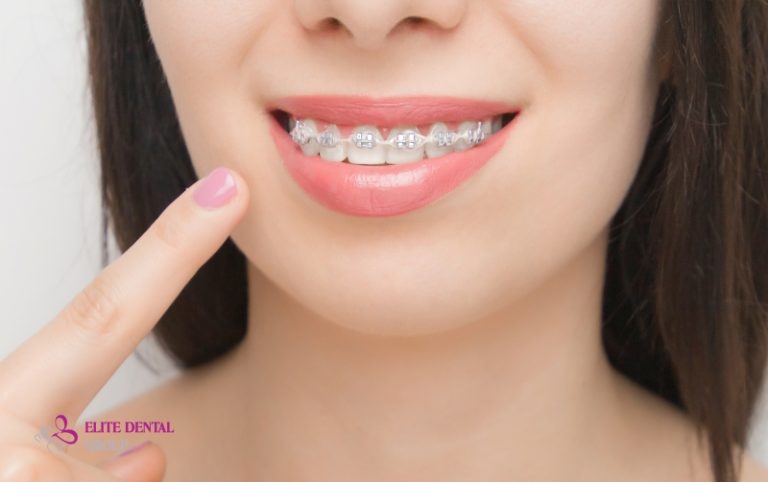
 Self-Ligating Ceramic Orthodontic Braces
Self-Ligating Ceramic Orthodontic Braces
This is a type of Ceramic orthodontic braces using self-ligating brackets instead of elastic ties. These brackets have a built-in locking mechanism that functions similarly to elastic ties: they secure the archwire in place and exert forces to move the teeth.
- Advantages: Helps save time on follow-up visits, as patients may need to come for check-ups every 1.5 months instead of every month.
- Disadvantages: The self-ligating mechanism is more noticeable on ceramic brackets and can feel bulkier. The cost of self-ligating ceramic braces is usually the highest among all types of brackets.
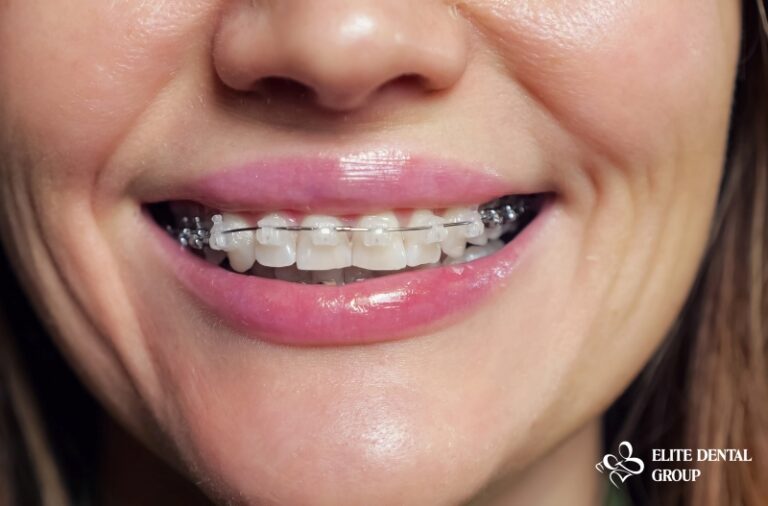
 MEAW Archwire Braces
MEAW Archwire Braces
This is an orthodontic method that uses an archwire designed with multiple horizontal loops to create force for tooth movement. This technique helps to address difficult orthodontic cases by targeting individual teeth and correcting facial asymmetries.
